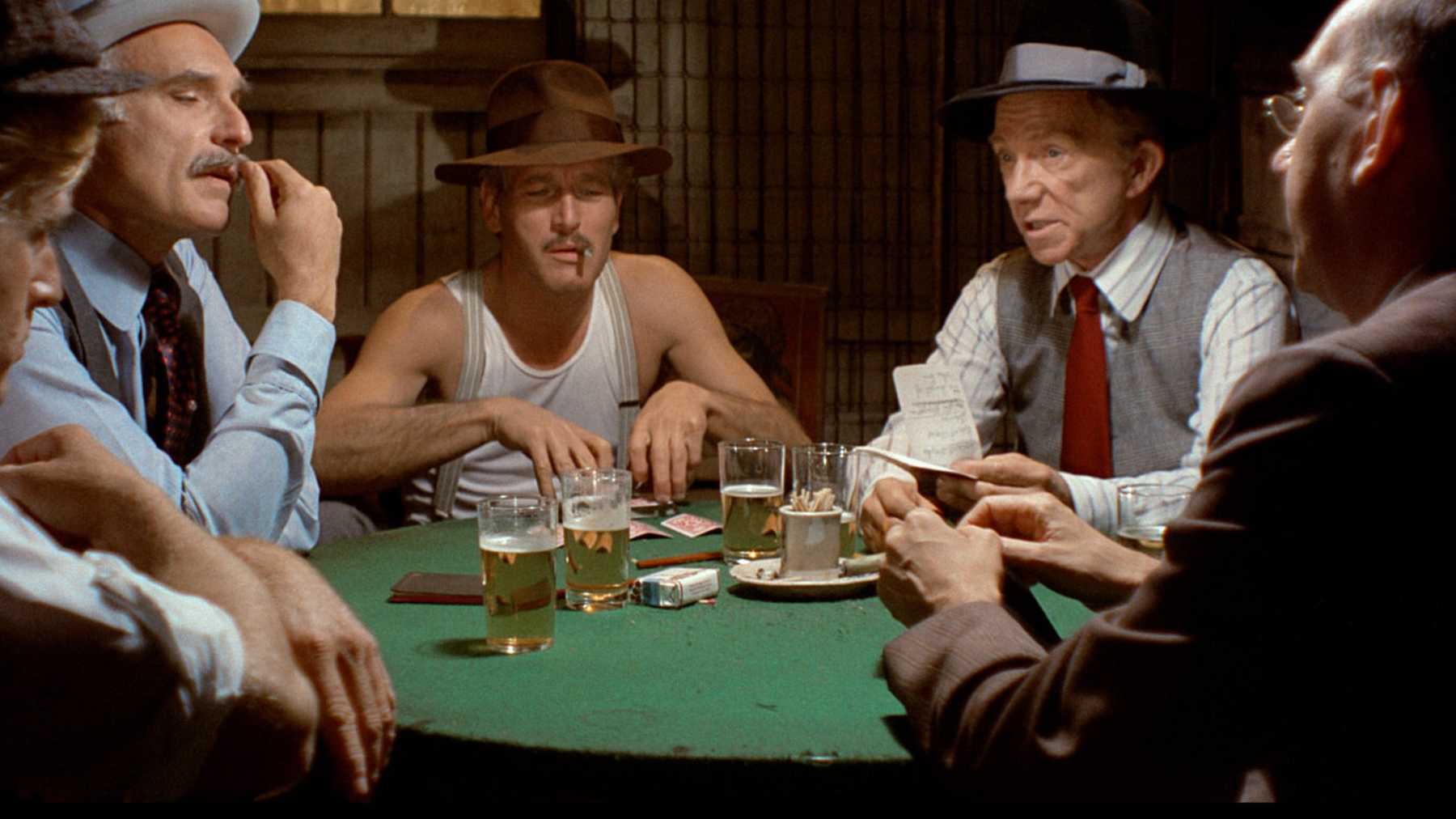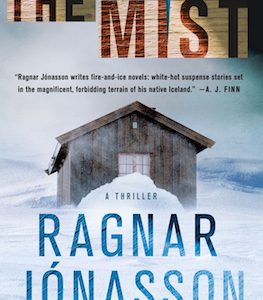Otto Penzler ranks, analyzes, & celebrates the 106 greatest crime films of all-time. Catch up on the series and find new installments daily here.
__________________________________
The Sting (1973)
__________________________________
TYPE OF FILM: Crime/Comedy
STUDIO: Universal
PRODUCER: Tony Bill, Michael and Julia Phillips
DIRECTOR: George Roy Hill
SCREENWRITER: David S. Ward
SOURCE: Original
RUNNING TIME: 129 minutes
PRINCIPAL PLAYERS:
Paul Newman………………………………………………………………………Henry Gondorff
Robert Redford………………………………………………….………………….Johnny Hooker
Robert Shaw……………………………………………………………………….Doyle Lonnegan
Charles Durning……………………………………………………………..…Lt. William Snyder
Ray Walston……………………………………………………………………………J.J. Singleton
Eileen Brennan………………………………………………………………………………..Billie
John Heffernan………………………………………………………………………….Eddie Niles
Harold Gould…………………………………………………………………………….Kid Twist
Dana Elcar………………………………………………………………………..F.B.I. Agent Polk
Robert Earl James………………………………………………………………….Luther Coleman
__________________________________
DID YOU KNOW?
__________________________________
When The Sting was first planned, Paul Newman was not scheduled to have any part in it. Robert Redford had teamed with Paul Newman four years earlier in Butch Cassidy and the Sundance Kid, and their charisma, combined with director George Roy Hill’s skill as a story-teller, had made the film one of the biggest box-office smashes of 1969. Redford was winding up his work on The Way We Were and preparing to star in The Great Waldo Pepper when he read the script for The Sting, an original screenplay by David S. Ward, who was set to direct it as well. Redford saw the great possibilities of the old-fashioned comic caper film as a vehicle for himself but was reluctant to trust a first-time director and talked to Hill about it. When the studio decided to use Hill as the director, Redford committed to it, and when Newman heard of it, he was not pleased with Hill, believing there should be a part for him so that the successful trio could be reunited. Hill reconsidered the part of Henry Gondorff, which had been dramatically smaller and portrayed the con man as a crude slob. There was a fair amount of rewriting to accommodate the two stars, who received a healthy (in 1973) half a million dollars each; Newman also got a share of the gross, and The Sting became an enormous box-office hit.
__________________________________
THE STORY
__________________________________

In 1936, in Joliet, Illinois, Johnny Hooker and his partner, Luther Coleman, swindle a gangster courier out of a large cash delivery, so his boss, Doyle Lonnegan, orders them killed. Corrupt police lieutenant William Snyder learns of Hooker’s haul and shakes him down for half the take, most of which Hooker has already lost in a gambling den. He, too, threatens to kill Hooker if he doesn’t come up with the money. Coleman, ready to retire after his big score, is killed by Lonnegan’s men, and Hooker promises to avenge his friend’s murder by swindling the big-time gangster out of a fortune.
Hooker goes to Chicago to team up with Henry Gondorff, described as “the greatest con artist of them all,” and they agree to do a “big con” on Lonnegan. They set up a classy but bogus gambling parlor and are offered the assistance of any con man they need, as all are eager to get revenge on the swaggering Lonnegan.
The con begins with Newman outcheating Lonnegan in a big poker game and Hooker telling their mark about it, acting as the ambitious right-hand man who wants to take over his employer’s racket. He explains to Lonnegan that he has a system for beating Gondorff by “past-posting” him on horse races—i.e., placing bets after the results are known to him but not to the betting parlor. After several tests and payoffs, Lonnegan trusts the system and Hooker.
Meanwhile, the FBI has entered the case, and Snyder is told to bring Hooker in. He is forced to turn on Gondorff by informing agent Polk about the time and location of the “sting” that is to be perpetrated. When the moment arrives, Lonnegan hands over a suitcase with $500,000 to bet on a horse. As the result comes in, so does the FBI, and Gondorff recognizes that he has been betrayed by Hooker and shoots him, whereupon Polk shoots Gondorff. Lt. Snyder hustles Lonnegan out of the betting parlor to protect him from involvement, leaving the suitcase full of cash behind. When the crook and the cop are out of sight of the gambling joint, Hooker and Gondorff get up from their faked deaths and everyone, including the phony FBI agent, celebrates the successful sting.
***
The fast-moving action, razzle-dazzle sets and costumes, great cast of character actors, best pairing of stars since Hepburn and Tracy, and a brilliant twisting plot combine to make this one of the most satisfying and watchable films ever made. The nostalgia oozes from sets that are a little too perfect and clean, costumes that are simply too original and enchanting, an unbelievable Redford as a two-bit lowlife, and the entire criminal element, which is a little too Runyanesque to be taken seriously. Realism is not what this picture is about, and if you seek it in this film, you were born without a sense of humor or the ability to enjoy magic.
Marvin Hamlisch adapted the ragtime music of Scott Joplin so wonderfully that he won an Oscar and helped the nation rediscover the joys of old-time ragtime. In the same year, he won the Oscar for Best Original Dramatic Score for The Way We Were.
When Henry Gondorff, played by Paul Newman, is introduced to Doyle Lonnegan played by Robert Shaw, Gondorff is introduced as “Mr. Shaw.”
The Sting was nominated for ten Academy Awards, winning seven, including Best Picture, Best Director (George Roy Hill), and Best Original Screenplay (David S. Ward).
At the Academy Awards ceremony, the big moment is always the presentation of the Oscar for Best Picture, which was to be presented by Elizabeth Taylor. As David Niven was introducing her, a genius by the name of Robert Opal streaked in front of the live audience and untold millions around the world. Comic singer and songwriter Ray Stevens was inspired to write “The Streak,” which became the number-one record in America. Six years later, Opal was found murdered in his sex shop in San Francisco.
As good as The Sting is, it couldn’t sustain a sequel. The Sting II (1983), incredibly written by David S. Ward, who should have quit while he was ahead, starred Jackie Gleason and Mac Davis in the roles created by Newman and Redford, hard as that might be to comprehend.
__________________________________
BEST LINE
__________________________________
Johnny Hooker sees Doyle Lonnegan for the first time and says, “He’s not as tough as he thinks.” Henry Gondorff replies, “Neither are we.”


















